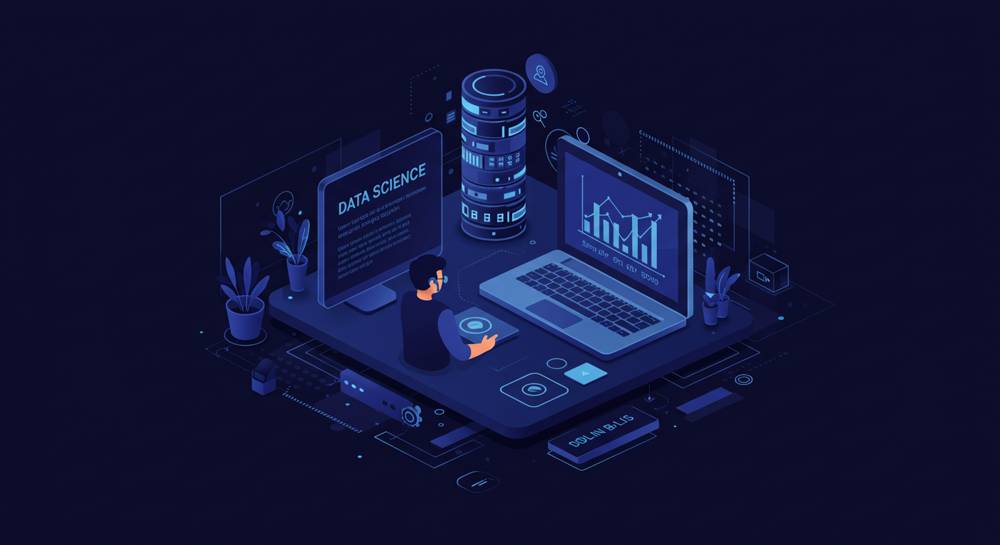If you’re looking to kickstart your journey in the fascinating world of data science, you’ve landed in the right place. You can get training on our article here as we delve deep into the core aspects of data science, its key components, and how it differs from related fields like data analytics. By the end, you’ll have a solid foundation to start or refine your knowledge in this domain. Let’s dive in and explore what makes data science one of the most sought-after skills of the 21st century.
Key Components of Data Science
Data science is a multidisciplinary field that combines mathematics, statistics, computer science, and domain expertise to extract meaningful insights and knowledge from structured and unstructured data. At its core, data science revolves around solving problems by turning raw data into actionable intelligence.
1. Data Collection
Every data science project begins with data collection. Data can come from various sources, such as relational databases, APIs, web scraping, IoT devices, or external datasets like Kaggle or government repositories. For instance, an e-commerce company might collect data on customer purchases, website interactions, and product reviews to understand buying behavior.
2. Data Cleaning
Raw data is rarely perfect. Cleaning involves handling missing values, removing duplicates, and correcting inconsistencies. Tools like Python’s pandas and R’s dplyr are widely used for this task. For example:
import pandas as pd
# Handling missing values in a dataset
df = pd.read_csv("data.csv")
df.fillna(0, inplace=True) # Replace missing values with 0This step ensures that the dataset is ready for analysis or modeling.
3. Exploratory Data Analysis (EDA)
EDA is the process of analyzing datasets to summarize their main characteristics, often using visualization tools. Libraries like Matplotlib, Seaborn, and ggplot2 help in identifying patterns, trends, and anomalies. For instance, a heatmap might reveal correlations between features in a dataset.
4. Model Building
Once the data is preprocessed, machine learning or statistical models can be applied to solve the problem. For example, predictive models like linear regression, decision trees, or neural networks can forecast future outcomes based on historical data.
5. Model Evaluation and Deployment
After training a model, its performance is evaluated using metrics like accuracy, precision, recall, and F1-score. Once validated, the model is deployed into production using frameworks like Flask, FastAPI, or cloud services such as AWS and Google Cloud.
Role of a Data Scientist
A data scientist is often dubbed the “unicorn” of the tech industry, as they possess a rare combination of technical expertise, analytical thinking, and domain knowledge. But what exactly does a data scientist do?
1. Problem Definition
Before diving into data, a data scientist collaborates with stakeholders to clearly define the problem and outline objectives. For example, in a healthcare project, the goal might be to predict patient readmission rates.
2. Data Engineering
Data scientists often work alongside data engineers to ensure data pipelines are robust and scalable. They might write SQL queries, define ETL (Extract, Transform, Load) processes, or even work with big data frameworks like Apache Spark.
3. Statistical Analysis
Strong statistical foundations are crucial for identifying patterns and verifying hypotheses. For instance, a data scientist might use A/B testing to determine which version of a webpage performs better.
4. Machine Learning and AI
A significant part of a data scientist’s role involves building machine learning models to automate decision-making processes. For example, a fraud detection model for a bank might use anomaly detection techniques to flag suspicious transactions.
5. Communication
Finally, data scientists don’t just analyze data—they also communicate their findings to non-technical stakeholders through visualizations and storytelling. Tools like Tableau, Power BI, or even Python's matplotlib are often used to create impactful reports.
Data Science vs. Data Analytics
Although the terms “data science” and “data analytics” are often used interchangeably, they are distinct fields with different scopes and objectives.
Focus Areas
- Data Science is about creating models and algorithms to make predictions or automate processes. It’s forward-looking and relies heavily on machine learning and AI techniques.
- Data Analytics, on the other hand, focuses on interpreting existing data to answer specific questions or identify trends. It’s more descriptive and diagnostic in nature.
Example Use Case
Consider an online retailer:
- A data analyst might analyze sales data to determine which products are performing well in a specific region.
- A data scientist might build a recommendation system to suggest products to customers based on past purchases and browsing behavior.
Skill Sets
Data science often requires advanced programming, knowledge of machine learning algorithms, and experience with big data tools. Data analytics, while still technical, emphasizes SQL, Excel, and visualization tools like Tableau.
The line between the two fields can sometimes blur, but understanding their differences helps professionals choose the right tools and methodologies for their goals.
Summary
Data science is an exciting interdisciplinary field that empowers organizations to make data-driven decisions. It encompasses everything from collecting and cleaning data to building and deploying predictive models. A data scientist plays a pivotal role in bridging the gap between raw data and actionable insights, leveraging tools and techniques from statistics, computer science, and machine learning.
Understanding the distinction between data science and data analytics is also crucial. While both fields share similarities, data science focuses more on prediction and automation, whereas data analytics is centered on descriptive analysis and reporting.
Whether you’re an intermediate developer looking to pivot into a data science role or a professional seeking to refine your expertise, mastering the key components discussed in this article is a great place to start. By embracing the power of data science, you’ll be well-equipped to tackle some of the most complex and impactful challenges in today’s data-driven world. Keep exploring, learning, and experimenting—you’re on the path to becoming a data science expert!
Last Update: 25 Jan, 2025

